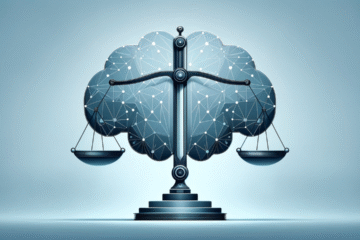
This article is written by Aryya Sinha of 1st Semester of Xavier Law School, St. Xavier’s University, Kolkata
Abstract
Federalism in its basic sense means division of legislative and executive power between central and regional governments so that each government can work independently in its own sphere. In a country like INDIA, where peoples from different religion, culture, caste and creed dwells together a federal structure is very much essential. Neither it would be possible for a single government nor is it desirable in the interest of people with varied culture, language, and diverse backgrounds. This paper will examine and highlight about and pros and cons of federalism.
KEYWORDS:
CULTURE, EXECUTIVE POWER, LANGUAGE, DIVERSE CULTURE.
Introduction
Federalism implies the mode of political organization that unites separate states within an overarching political system in such a way that allows each to maintain their integrity. Every federal system requires the division of power between Union and State government and both are independent in their own sphere and not subordinate to one another. To avoid the chaos Constitution of India enumerates various items of legislation in three list: UNION LIST, CONCURRENT LIST, STATE LIST. Any matter not covered by any of these three lists would be treated as residuary power of the Parliament. The independent Judiciary plays an important role as final interpreter and upholding the Constitutional values.
THE NATIONS HAVING FEDERAL FORM OF GOVERNMENT ARE;[1].
1. INDIA 15. MEXICO
2. AUSTRALIA 16. NIGERIA
3. BRAZIL 17. PAKISTAN
4. ETHIOPIA 18. RUSSIA
5. GERMANY 19. MICRONESIA
6. UNITED STATES 20. UAE.
7. NIGERIA 21. EUROPEAN UNION
8. MALAYSIA
9. VENEZUELA
10. ARGENTINA
11. BELGIUM
12. IRAQ
13. CANADA
14. NEPAL
Concept of Federalism
Federalism constitutes a complex governmental mechanism of a country and under this system their exist simultaneously a central and state government. [2] In a federal government the powers are divided between the central and state government and the Central government may make law for the whole country and the State government may make law for the whole state, in such am way each government ius legally independent in its own sphere. Federal system of government is more common in the world than that of Confederal system. This system is based upon a compromise between unity and regional diversity, between the need for an effective central power and the need for the checks on power.[3]
Federal System in US
The movement for federalism was greatly strengthened by the reaction to Shays’ Rebellion of 1786–1787, which was an armed uprising of yeoman farmers in western Massachusetts. The rebellion was fueled by a poor economy that was created, in part, by the inability of the federal government to deal effectively with the debt from the American Revolutionary War. Moreover, the federal government had proven incapable of raising an army to quell the rebellion, so that Massachusetts had been forced to raise its own.[4]
First time in 1787, the constitution of US established a FEDERATION and the concept of federal state emerged in a definite shape. The US is considered as model federalism and is known as oldest and the most respected member of the family of federal constitution. Before 1787, US CONFEDERATION and it became the FEDERATION with the adoption of Constitution of US in 1787. American constitution divides power in such a way that the power of general government is specified and the residue is left to regional government.[5]
The word FEDERATION derives from the Latin word FOEDUS which means “treaties or agreement “. Federal states are those states which are developed by a treaty or an agreement.
DUAL FEDERALISM -Despite Chief Justice Marshall’s strong push for the federal government in US, the court of his successor, Roger B. Taney (1835–1864), decided cases that favored equally strong national and state governments. The basic philosophy during this time was that the U.S. Government ought to be limited to its enumerated powers and that all others belonged to the states. Any powers that were not granted to the U. S. Government by the Constitution were handed over to the states through the Tenth Amendment. Dual federalism had a significant impact on social issues in the United States. Dred Scott v. Sanford was an example of how Taney’s dual federalism helped stir up tensions eventually which lead the outbreak of the Civil War. Another example of dual federalism’s social impact was in the Plessy v. Ferguson ruling. Dual federalism had set up that the U.S. Government could not legislate on moral issues. It was an issue that had to be decided by the states, and thus “separate but equal” could exist. Lastly , near the end of dual federalism’s lifespan , both the Sixteenth and the Seventeenth Amendment bolstered the power of the national government, and divided state and federal power .
Federalism in India
Till 1935 we had unitary system in INDIA , The Government of India Act , 1935 envisaged he federal scheme and first time introduced the federal concept in India and made legal use of the word ‘FEDERATION’ , even though the process of decentralization and devolition of power had started since the earlier Government of India Act .[6]The framers of constitution aimed at establishing a federal system in India in a view of the social diversities and the vast size of the country .[7] Fissiparous tendencies[8] , the legitimate grievances o the states should be addressed within the framework of the Federal Constitution .
The Indian Constitution was framed by the Constituent Assembly according to Cabinet Mission Plan and its first meeting was held on December 9, 1946 and the framers used the term federal in their speeches. In view of the external conditions as well as the vastness of the country and its heterogeneous elements, there was consensus in the Constituent Assembly that a unitary system was not only undesirable, but unworkable. Therefore, India was going to have a federal constitution. In order to bring the Indian States under the federal scheme, it was also announced that the Union should have only those three powers of defence, foreign affairs and communications, which had been conceded by the Cabinet Mission Plan, and the states of the federation shall be autonomous units, having all residuary powers.27 The Mountbatten Plan of the June 3, 1947 announced partition of the country and a separate Constituent Assembly for the proposed state of Pakistan.28 After the decision to partition the country was announced, immediately, the Union constitution Committee met on the June 5, 1947 and decided that the constitution of India should be federal with a strong centre. It was also decided that there should be three legislative lists and residue was left unenumerated, should go to the union and not to states and it was affirmed by the Constituent Assembly and implemented by the Union Powers Committee. The words ‘federation’ and ‘federal’ do not appear in any article of the constitution of India. The framers used the word ‘union.’ Article 1(1) of the constitution describes: “India, that is Bharat, shall be a Union of States.” The Union Constitution Committee had used the word ‘federation’ but the Drafting Committee of the Constituent Assembly substituted it with the word ‘Union’. Moving the Draft constitution for the consideration of the Constituent Assembly on November 4, 1948, B.R. Ambedkar, Chairman of the Drafting Committee explained the significance of the use of the expression “Union” instead of the expression “Federation”.
Indian Constitution is basically federal in form and is marked by the traditional characteristics of a federal system, namely, supremacy of the constitution, division of power between the Union and the state governments, existence of an independent judiciary and a rigid procedure for amendment of the constitution. It establishes a dual polity, with clearly defined sphere of authority between the Union and the states, to be exercised in fields assigned to them. There is an independent judiciary to determine the issues between the Union and the States, or between one state and another.41 Andrew Heywood said: “The federal systems give regional and local interests a constitutionally guaranteed political voice. The states exercise a range of autonomous powers and enjoy some measure of representation in central government through Council of States”. Every federal system requires division of powers between the Union and state governments. It is prescribed in our Constitution by part XI along with VII schedule.
Decentralization in administration is the core objectives of federalism and power is divided between the Centre and the states, but by 73rd and 74th constitutional amendments, another level has been created viz., Panchayats and Municipalities. This may be regarded as a third tier of government. So, in India we have three levels of government and it is considered novel form of federation unknown to other countries in the world.[9] Therefore, we can say that the Indian federalism is unique in nature and offered a possible solution to a number of problems. It has been tailored according to specific needs of the country.
Pros of Federalism[10]
Federalism is a form of government that allows for more than one central entity to have power. What this means is that there is a federal government who is above all others, and smaller, more localized forms of governments that take control of local and regional issues. The idea behind this is to be able to better suit the needs of each area of the country, but some issues certainly arise.
1. Division of Powers: In a federal government the powers of administration are divided between the centre and the units. The powers may be distributed in two different ways. Either the constitution states what powers the federal authority shall have, and leaves the remainder to the federating units, or it states what powers the federating units shall possess and leaves the remainder to the federal authority. The remainder is generally known as residuary powers. The first method was employed in America and the second in Canada. The federal government in U.S.A., for example, is weak in relation to the states whereas the federal government in Canada is more powerful. In a federation both the federal and state governments are independent and autonomous in the spheres of their powers. ‘One is not subordinate to the other. Both derive their powers from the constitution which is the supreme law of the land. The powers enjoyed by the units are, therefore, original and not delegated by the centre.
2. Separate Government: In a federal form of government both the centre and the units have their separate set of governmental apparatus. America is a federation of states. States have therefore separate legislatures and Separate executives.
3. Written Constitution: A federal government must have a written constitution. As a federation is a political partnership of various states and consequently there must be a written agreement in the form of a written constitution. The best example thrives here as the Indian Constitution which is the longest written Constitution in the world.
4. Rigid Constitution: The constitution of a federation should be more or less rigid. It is regarded as a sacred agreement, the spirit of which should not be easily violated. A flexible constitution allows a scope to the central government to curtail the autonomy of the federating states.
5. Special Judiciary: In a federation, there are possibilities of constitutional disputes arising between the federal centre and the units or between one unit and another. All these disputes are to be adjudicated in the light of the constitution. For this purpose a special judiciary with wide powers must be established. It should act as the custodian and guardian of the constitution. It should be vested with powers of declaring any law, national or local, ultra vires if it is at variance with the articles of the constitution. The constitution is thus the supreme law in a federation to which both the centric and the state must adhere to.
6. A Better Understanding of Local Issues and Demands – The central government has no true way to understand what issues, demands and changes need to be made in every area of the country. This is why federalism is such a great advantage. The smaller branches of the local governments are right in the middle of the local society. They are better suited to deal with the true things that need to be changed.
7. Increasing Citizen Participation – By not centralizing all power into the hands of a national government, but sharing that power with state governments, which are closer to the level of the common citizen, our founders actually increased a citizen’s ability to affect their government, government policy, and law-making.
8. As a Protection Against Tyranny – One of the most important points of federalism in dividing the power between the national government and state governments, and spreading the national government’s power among three branches that serve as a check and balance on each other, is that it serves as a deterrent to tyranny and runaway power. The protections we have in our system against a tyrannical, runaway government are one of the most important points to why the system was designed the way it was.
9. More Efficient – When some of the power of the government is dispersed among the states, giving states the right to solve some of their own problems, you allow for more efficiency within the system. To try to have a national solution to all problems, which could be referred to as a ‘cookie-cutter method’ of law and policy making, you end up with solutions that are more effective in some states, and less effective in others. To allow states to create solutions to their own problems, using policies and laws that work best in their state, means that each state can come up with its own solution, making government/governance more efficient.
10. Innovation in Law and Policy is Encouraged – By allowing for many state governments, different sets of policies can be tried, and the ones found most effective at solving its problems can then be implemented in other states, or on the national level. Imagine Christopher Columbus trying to get funding to voyage across the Atlantic Ocean if there was a unified Europe back then, with its head saying ‘no!’ to him; instead, he had several governments from which he could try to get his funding – he got turned down by several governments before Spain gave him the okay. The same principle applies today with our many states – something that is rejected in one state can most likely be tried in another state, with competition leading the way, based on effectiveness of those laws.
11. State Governments Can be More Responsive to Citizen Needs – The closer a government entity is to its citizens, the more likely it is the respond to the needs of citizens. States are more likely to listen to citizen needs, and respond to them, than the national government would be.
Cons of Federalism
1. Conflict of Authority – The biggest problem that arises when you have two bodies of government in power is the power struggle. Both central and state government intend to assert their power over the other which at time causes conflict between them. Even the long-term conflict between the central and state government can create hurdles in way of national development and prosperity.
2. Regionalism Over Patriotism – The mark of a great country is just how patriotic and prideful the citizens is to be a part of it. Federalism, since it promotes smaller level of government, it also promotes smaller levels of pride. It can begin to pit one region against another and take away from the feeling of patriotism that should be present all over the entire country.
3. A Lack of Accountability – With the responsibility of the government being shared, it becomes very easy for one sector to release responsibility for the other, and vice versa. This can become a very large problem because if something goes wrong, both sides of the government can relinquish control for the responsibility.
4. Inequalities Between States – The federal form of government allows for regional inequalities between different states. For example, instead of education funding throughout the country being the same, since it is a state issue, some states will spend more, per capita, on education than other states, causing what could be considered a disparity. The same goes for other things, as well, such as taxes, health care programs, and welfare programs which increases regional inequality amongst the different states.
5. The Blockage of Nationalist Policies by States – States can fight against the existence of certain national laws by challenging them in court, or going out of their way to not enforce those national laws, or even deliberately obstructing enforcement of national law.
CONCLUSION
Federalism is a governing system that has proven to be effective in balancing power and fostering cooperation between different levels of government. Through the division of power and responsibilities, federalism allows for greater flexibility and responsiveness to diverse regional needs and preferences. It promotes democratic governance, protects individual rights, and encourages innovation and policy experimentation. Federalism also serves as a mechanism for managing conflicts and maintaining stability in pluralistic societies.
However, federalism is not without its challenges. The distribution of power between the central government and regional entities can lead to conflicts and tensions. Coordinating policies and achieving consensus among multiple governments can be complex and time-consuming. Moreover, there is a risk of inequalities and disparities among regions, particularly in terms of resources and development.
Despite these challenges, federalism has proven to be adaptable and resilient, allowing countries to accommodate diverse cultural, social, and economic conditions within a unified framework. It provides opportunities for citizens to participate in decision-making processes at multiple levels, fostering a sense of ownership and local empowerment.
In conclusion, federalism has been a dynamic and evolving concept that continues to shape and influence governance around the world. It strikes a delicate balance between centralization and decentralization, providing a framework that promotes unity, diversity, and effective governance. As countries grapple with the complexities of modern governance, federalism offers a valuable model for fostering cooperation, safeguarding rights, and promoting democratic principle
[2] Durga Das Basu, Comparative Federalism 5-6.
[3] Supra note 3.
[4] Federalism in the United States – Wikipedia
[5] K.C. WHEARE, FEDERAL GOV. (Oxford University Press, London 1945)
[6] The government of India act, 1919 introduced the diarchy or dual government.
[7] Pratiyogia Darpan, Indian Polity, 76 (2003)
[8] Causing division of fragmenting something.
[9] Supra Note 37 at 42.
[10] www.shivajicollege.ac.in




0 Comments